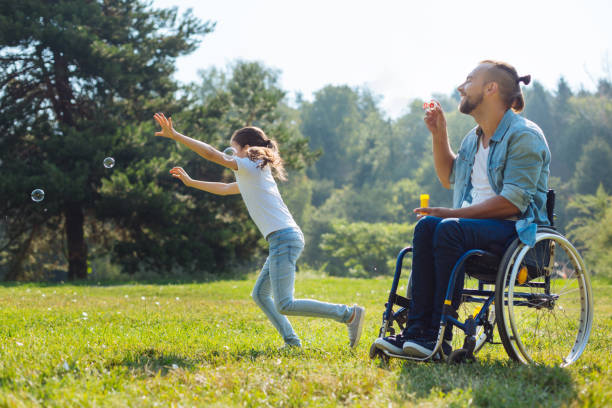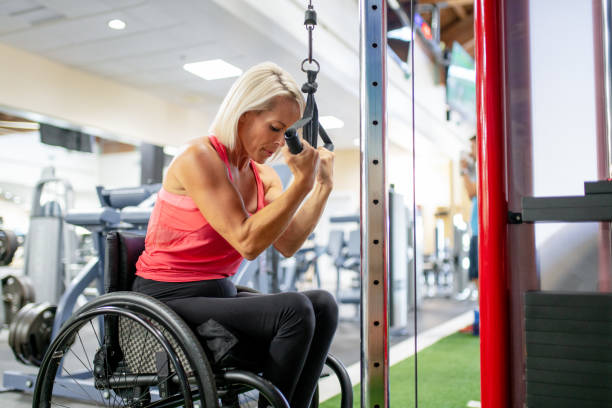Achieve Your Fitness Goals Regardless of Mobility Issues: 10 Invaluable Tips for Effective Workouts
Are you determined to stay active and fit, but find yourself facing physical limitations? Don’t worry, because we’ve got your back!
In this blog post, we’ll share with you 10 essential tips that will help you exercise and achieve a healthy lifestyle even with limited mobility.
Whether you’re recovering from an injury or living with a chronic condition, these practical and creative suggestions will empower you to embrace fitness on your own terms.
So let’s dive in together and unlock the door to an active life full of possibilities!

Reasons to Exercise Even with Limited Mobility
As a gym and fitness enthusiast, you may feel discouraged if you have limited mobility. Perhaps you have a physical disability or injury that prevents you from engaging in certain types of exercise. However, it’s important to remember that exercise benefits everyone, including those with limited mobility.
Even with limited mobility, exercising will help you attain the following:
1. Improved Physical Functioning
Exercise can help improve physical functioning, even for those with limited mobility.
By engaging in regular exercise, you can improve your range of motion, flexibility, and strength. This can make it easier to perform daily activities such as dressing up, cooking, and cleaning. Additionally, exercise can help improve balance and reduce the risk of falls, which is important for those with limited mobility.
2. Improved Mental Health
Exercise is beneficial for physical and mental health. It can help reduce stress, anxiety, and depression.
Exercise releases endorphins, which are natural mood boosters. Additionally, exercise can help improve self-esteem and confidence, which can be especially important for those with limited mobility who may feel self-conscious or insecure about their physical abilities.
3. Increased Social Interaction
Engaging in exercise can also provide opportunities for increased social interaction. Joining a gym or fitness class can allow you to meet new people with similar interests.
Enhanced social interaction can help reduce feelings of isolation and loneliness that are common for those with limited mobility. Additionally, social interaction can provide a sense of support and encouragement, which can be beneficial for motivation and adherence to an exercise routine.
4. Reduced Risk of Chronic Diseases
Regular exercise can reduce the risk of chronic diseases such as heart disease, diabetes, and cancer.
By engaging in regular exercise, you can help reduce your risk of these diseases and improve overall health.
5. Improved Quality of Life
Ultimately, exercising with limited mobility can improve overall quality of life. It can provide a sense of accomplishment and empowerment and improve physical and mental health.
Additionally, exercise can help improve sleep quality, benefiting those with limited mobility who may experience sleep disturbances due to physical limitations.

Unlocking the Power of Fitness: 10 Essential Tips to Exercise with Limited Mobility
Exercising with limited mobility can be a real challenge, but that doesn’t mean you should give up on your fitness goals. There are numerous ways to stay active and healthy, even with physical limitations.
Here are ten essential tips to help you exercise with limited mobility:
1. Focus on What You Can Do
It’s easy to get discouraged when you can’t do the exercises you used to love, but it’s important to focus on what you can do.
Don’t let your limitations hold you back from being active.
Instead, find new activities that work for you. For example, if you can’t run, try swimming or cycling.
2. Start Small
If you’re just getting back into exercise after a period of limited mobility, start small.
It’s better to start with something easy and build up gradually than to overdo it and risk injury.
Try walking for a few minutes daily and gradually increase the time and intensity.
3. Get Support
Having support from family, friends, or a trainer can make a huge difference in your exercise journey.
They can offer encouragement, help you stay on track, and provide motivation when you need it most.
4. Use Adaptive Equipment
There are plenty of adaptive equipment options available that can help you exercise safely and comfortably.
For example, if you have trouble standing, a recumbent bike might be a good option. If you have trouble gripping weights, try using wrist straps.
5. Stretch Regularly
Stretching is essential for maintaining flexibility and preventing injury.
Make sure to stretch regularly, especially before and after exercise.
If you’re not sure which stretches are best for you, talk to a physical therapist or trainer.
6. Stay Hydrated
Hydration is important for everyone, but especially for those with limited mobility.
Make sure to drink plenty of water before, during, and after exercise to stay hydrated.
7. Don’t Push Too Hard
It’s important to challenge yourself, but don’t push too hard.
Listen to your body and take breaks when you need them. Pushing too hard can lead to injury and setbacks.
8. Find a Workout Buddy
Working out with a friend can make exercise more fun and motivating.
Find someone who shares your fitness goals and commit to exercise together.
9. Try different Types of Exercise
Mixing up your exercise routine can help prevent boredom and keep you motivated.
Try different types of exercise, such as yoga, Pilates, or tai chi.
10. Celebrate Your Progress
It’s important to celebrate your progress.
Even small victories, like being able to walk a little farther or lift a little more weight, are worth celebrating.
Acknowledge your accomplishments and use them as motivation to keep going.

Final Thoughts
Exercising with limited mobility is not only possible but also incredibly beneficial.
By improving cardiovascular health, reducing pain and stiffness, increasing strength and balance, boosting mood and energy, maintaining a healthy weight, reducing the risk of chronic diseases, and improving the overall quality of life, regular exercise can help you feel better and live a happier, healthier life.
Remember, any type of exercise is better than no exercise. So find an activity that you enjoy and that works for your body.
With dedication and perseverance, you can reap the many benefits of exercise, even with limited mobility.
So why not give it a try?
Looking to build muscle and endurance without breaking the bank? Don’t look any further.
Subscribe to Kloud Iron’s 28-day fitness program and begin your journey toward optimal mental health and physical fitness.
To learn more about Kloud Iron Fitness Hub’s offers, contact us today or message/follow us on Facebook and Instagram. We are also available on YouTube.


Leave Your Comment